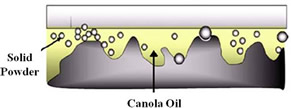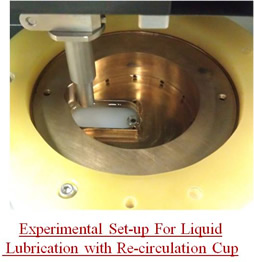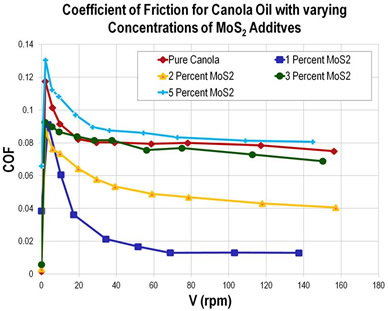|
Mechanisms of Liquid Lubricant Enhancement using Powder Lubricants�
During periods of boundary and mixed lubrication, in addition to ultra-high loading and high temperatures, liquid lubricants are often improved through the use of solid lubricant additives. This leads to an effect called "partlcle-enhanced mixed lubrication". However their precise mechanism for improving performance, remains uncertain. In this project, parametric studies for different additive materials are combined with optical investigations to determine the transfer film mechanics behind optimal enhancement of liquid lubricants through additive powders. �
|
 |
Sample Results:
Select PFTL References:
1.) Higgs III, C.F., Lovell, M.R., "A Pin-on-disk Experimental Study of a Green Particulate-fluid Lubricant," Journal of Tribology, (2008)
2.) Lovell, M.R., Kabir, M.A., Menezes, P.L., Higgs III, C.F., "Influence of Boric Acid Additive Size on Green Lubricant Performance." Philisophical Transactions of the Royal Society A: Mathematical, Physical , and Engineering Sciences, (2010)
|






